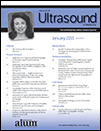Application of 3-Dimensional Ultrasonography in Assessing Carpal Tunnel Syndrome
Abstract
Objectives
The aim of study was to assess the usefulness of 3D ultrasonography (3DUS) in the diagnosis of carpal tunnel syndrome.
Methods
Fifty patients with carpal tunnel syndrome confirmed by electromyography and 37 healthy control participants underwent 3DUS of the wrists. The mean times per participant for the 3DUS examination and review of the 3D volume set were recorded. The cross-sectional area at the proximal carpal tunnel and the maximum swelling point were measured. Data from patients and controls were compared for determination of statistical significance. The accuracy of the 3DUS diagnostic criteria for carpal tunnel syndrome was evaluated using receiver operating characteristic analysis, and changes in the median nerve shape, including the maximum swelling point, were assessed by review of the 3D volume data.
Results
The mean times for examination of a participant and review in each wrist were 56 seconds and 5.7 minutes, respectively. Significant differences were observed in the mean cross-sectional areas of the median nerve between patients and controls. The mean cross-sectional areas ± SD were 16.7 ± 6.7 mm2 in patients and 8.3 ± 1.9 mm2 in controls. Using the receiver operating characteristic curve, a cutoff value of greater than 10.5 mm2 provided diagnostic sensitivity of 84% and specificity of 86%. In 42 of 73 wrists with carpal tunnel syndrome, the median nerve showed fusiform morphologic abnormalities and maximum swelling points.
Conclusions
Our results show that 3DUS could markedly decrease scanning time, and measurement of the median nerve cross-sectional area combined with morphologic analysis using 3DUS is a promising supplementary method for the diagnosis of carpal tunnel syndrome.




